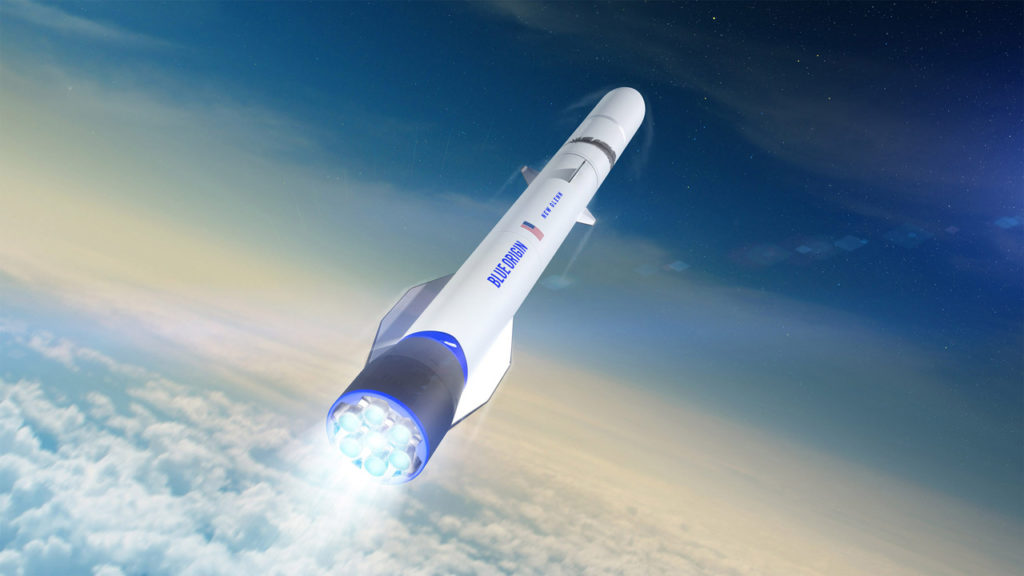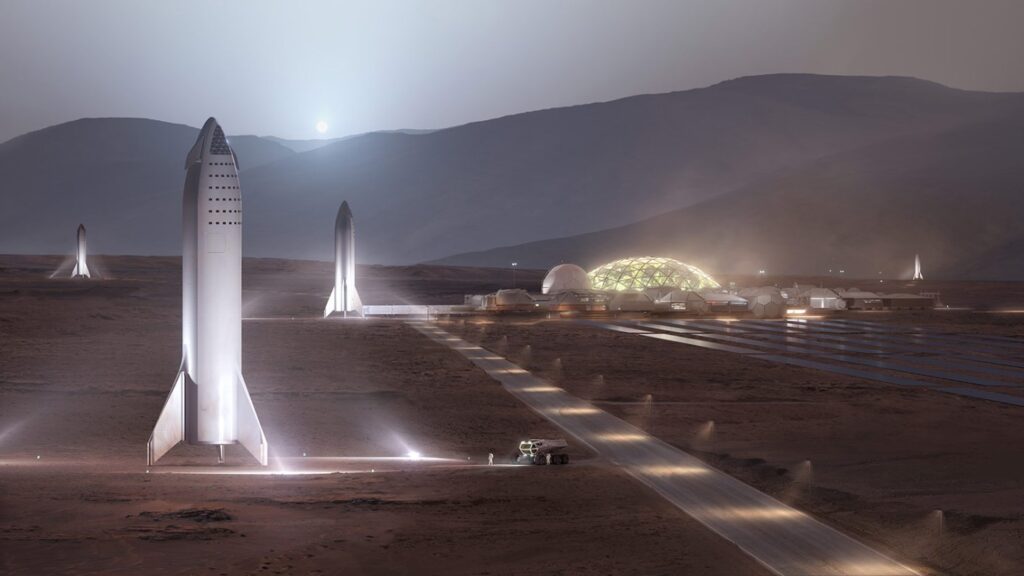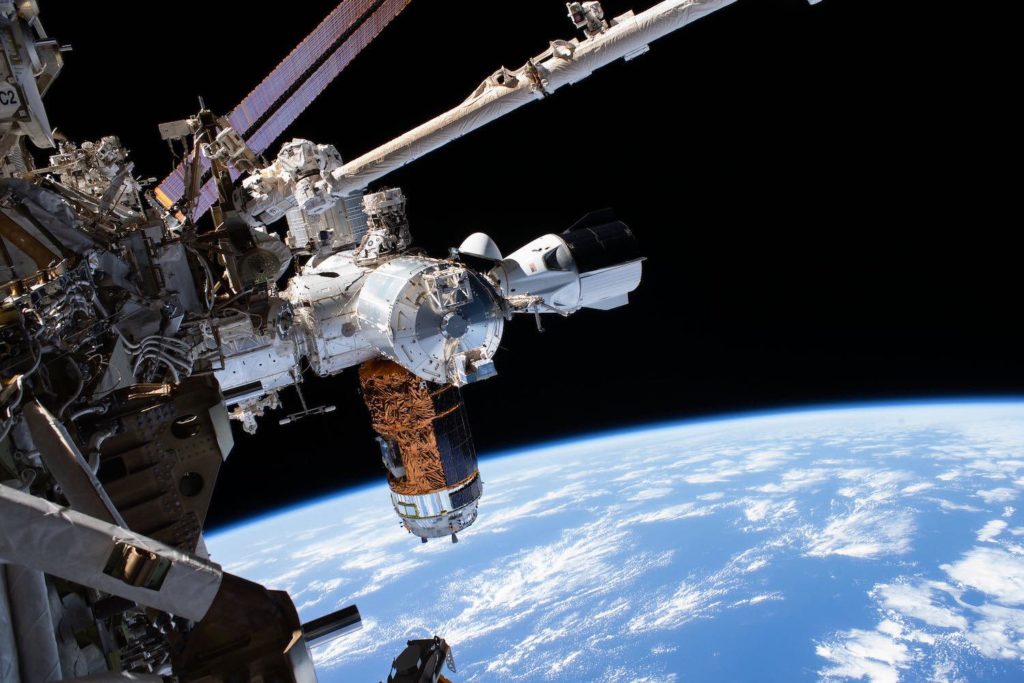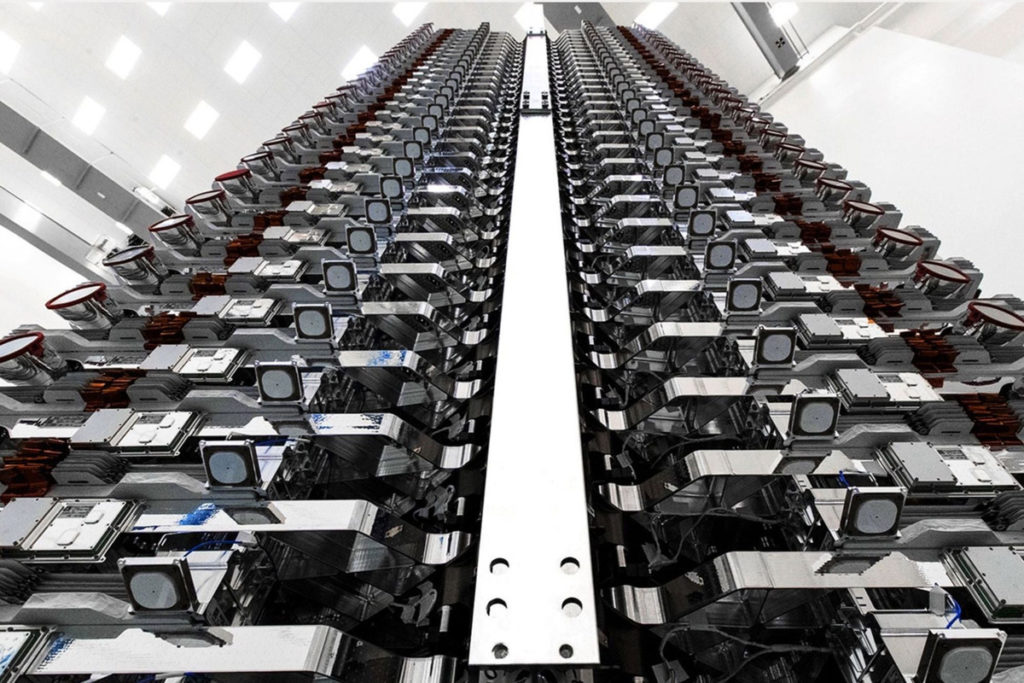If you type in relentless.com – it goes to the Amazon website. The online retailer’s growth has been relentless for 25 years, driven by Jeff Bezos.
Yet his space company does not appear to be moving at the same pace. Blue Origin sees itself as the tortoise in the race against the hare.
Read SPACEX BEATS BOEING? HOW SPACEX WON SENDING ASTRONAUTS TO SPACE
The hare is so confident of winning it takes a nap. The tortoise is slow and steady and ends up victorious.
But if SpaceX is the hare in this story, there’s a twist. Because it’s definitely not napping.
Bezos quietly founded Blue Origin in 2000. Elon Musk started SpaceX two years later.
The entrepreneurs have been obsessed with space since they were young but have radically different visions. Bezos dreams of space colonies holding a million people, sustained by the sun and the resources of the moon.
Before even trying to attempt floating colonies, Blue Origin still needs to overcome the hurdle of actually getting into orbit first.
Different versions of the New Shepard have flown over a dozen times, but it doesn’t enter orbit. It flies past the Kármán line – the internationally recognized boundary of space, 100 km or 62 miles out – and then it comes back down.
A short trip for future space tourists who have money to splurge on a joyride. An orbital flight is much harder to achieve.

Instead of going up and down, it goes around. SpaceX’s Falcon 9. It’s launched at a high enough speed to send it around the planet.

SpaceX first went into orbit in 2008. Blue Origin still hasn’t done the same 12 years later. Talking with the New York Times Elon Musk told that “Blue Origin’s rate of progress is too slow and the amount of years Bezos has left is not enough.”
The hope is for Bezos’ company to get into orbit in 2021 using New Glenn, a powerful rocket. Just like SpaceX’s suite of rockets, the New Glenn’s booster lands back on Earth.

It’s considerably bigger than SpaceX’s Falcon Heavy but SpaceX is already developing a rocket that towers over them all.
According to the company, Starship will be the world’s most powerful launch vehicle. It’s also fully reusable and will help fulfill Musk’s ambition of building a city on Mars.

Elon said “We need things that make you want to get out of bed in the morning and be excited about the future. And I think being a space-faring civilization is one of those things that everyone can get excited about. At least one person isn’t too excited about this particular plan”.
The Amazon boss calls the idea of colonizing mars “un-motivating” and points out living on top of Mount Everest would be more comfortable than a freezing Mars. Not that it deters Musk. He says there’s a fighting chance of an uncrewed mission to the red planet by 2024, later than previously hoped, with a crewed mission to follow.

SpaceX made significant progress toward that goal by sending astronauts to the International Space Station in May 2020, the first private company to take people into orbit. Working rapidly is engrained in the culture.
Musk had millions when he started his rocket business but not billions. Most of the parts are built in-house to cut down on costs. Still, SpaceX nearly went bankrupt in 2008 before a fourth attempt into orbit was finally successful and helped land a $1.6 billion dollar contract with NASA.
Pumping out products is necessary in order to secure partnerships that will fund its biggest dreams.
Blue Origin isn’t hurting for money right now. Bezos is the richest person on the planet.
He sells more than a billion dollar’s worth of Amazon stock every year and puts it toward his space venture.
An ex-girlfriend once said the reason he’s making so much money is to get to outer space. Nowhere is the difference in their progress more stark than when they go head to head.
SpaceX beat out Blue Origin to win a contract worth billion to launch classified missions for the U.S. Air Force using its Falcon rockets. The five-year deal begins in 2022. Blue Origin said it was disappointed in the decision.
The Pentagon also chose United Launch Alliance but not Northrop Grumman. There are more races to come.

Blue Origin, SpaceX, and Dynetics are designing landers for NASA’s next mission to the moon. Bezos’ company has been replicating moon landings on Earth with New Shepard. October’s flight carried sensors for the agency that will have the ability to look out for hazards like craters and large rocks.
SpaceX has a very different approach. It wants to modify Starship instead of building a new spacecraft from scratch. NASA says this could be game-changing but questions whether the company can complete it in time to carry the first woman and the next man to the moon by 2024.
There is another arena in space where the two are competing. The internet space race.

SpaceX has been launching Starlink satellites to connect places where internet is unreliable, unaffordable, or unavailable. Musk called Bezos a copycat for also creating a satellite internet service.
Amazon’s Project Kuiper, as it’s dubbed, could rely on Blue Origin for launches. New Glenn is already lined up to deploy satellites for UK’s OneWeb and Canada’s Telesat.
Read SPACEX BEATS BOEING? HOW SPACEX WON SENDING ASTRONAUTS TO SPACE
The US Federal Communications Commission approved Amazon’s 3,200 satellites so long as it doesn’t interfere with the 12,000-strong Starlink constellation that could one day go up to 42,000.
A possible advantage Amazon has over SpaceX is that Kuiper can be integrated into the wider brand. Amazon Web Services offers products such as data storage in the cloud. Companies like Netflix are already clients.
So, the satellites service can be the middleman to move the data. Except, we don’t know when launches will start or when the service will begin.
Meanwhile, SpaceX has already put hundreds of satellites into low Earth orbit and wants to provide near-global internet coverage by 2021 or 2022. It appears SpaceX is well ahead of its competitor though Bezos does have a record of farsightedness.
Read WHY DOES THE SPACEX DRONE SHIP CAMERA CUT OUT OFF UPON LANDING
He’s trying to capture the spirit of thinking long-term by constructing a gigantic $42 million dollar clock in a mountain he owns in Texas that’s supposed to tick for 10,000 years.
But if you ask SpaceX, time is running out for Blue Origin. What do you think: Do you think Blue Origin will be able to make it into orbit in 2021? Do you think it’ll happen after?
Sources:
